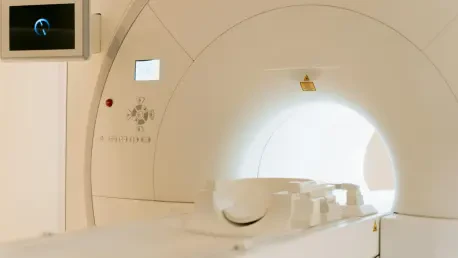I’m thrilled to sit down with Rupert Marais, our in-house security specialist with a wealth of expertise in endpoint and device security, cybersecurity strategies, and network management. Today, we’re diving into a fascinating story from the field of IT problem-solving in a hospital setting. Rupert will share insights on the unique challenges of being a sysadmin in a critical environment, the detective work behind troubleshooting unexpected issues, and the creative solutions that can make a big impact. We’ll explore how a seemingly small fix can have a profound effect on operations, especially when it comes to specialized equipment like medical scanners.
Can you tell us about the unique challenges of working as the sole sysadmin in a high-stakes environment like a hospital?
Absolutely. Working as the only sysadmin in a hospital is a juggling act. You’re responsible for everything from maintaining servers and user accounts to ensuring critical systems are up and running 24/7. The pressure is immense because downtime can directly impact patient care. You’ve got to prioritize tasks while being ready to pivot at a moment’s notice for emergencies. Plus, you’re often dealing with a mix of modern and legacy systems, which can be a compatibility nightmare. It’s a role that demands both technical skills and a calm head under stress.
How do you approach being pulled into issues that fall outside the typical IT scope, like troubleshooting medical equipment?
It’s not uncommon to get roped into problems that aren’t strictly IT, especially in a hospital where every system is interconnected. My first step is always to listen carefully to the staff reporting the issue—whether it’s a clinician or a technician—and understand the symptoms they’re seeing. Even if I’m not trained on the specific equipment, I apply a general problem-solving mindset: isolate the variables, check connections, and look for anything unusual. It’s about translating IT principles to unfamiliar territory while being cautious not to overstep into areas that require specialized expertise.
What goes through your mind when you encounter a system that’s underperforming, like a workstation tied to critical equipment?
Initially, it’s a mix of curiosity and concern. You start wondering if it’s a hardware bottleneck, a software glitch, or something in the network causing the lag. My instinct is to rule out the basics first—check resource usage, look at logs, and inspect physical connections. There’s also a bit of urgency, especially in a medical setting where delays can affect outcomes. You feel the weight of needing to figure it out quickly, even if the system isn’t something you’re fully familiar with.
When you’re investigating hardware setups, like cable configurations, what do you look for to spot potential issues?
I always start with the physical layer because it’s often the root of weird problems. I check the type of cables used, their condition, and whether they match the standards for the equipment they’re connecting. I also look at how they’re routed—are they too long, improperly terminated, or passing through unnecessary junctions? In a hospital, you might find dedicated setups for specific devices, so I pay attention to whether the configuration makes sense for the intended purpose. A mismatched or overly complex setup is usually a red flag.
Can you share what it’s like to physically trace a cable through a large facility, and the surprises you might encounter?
Tracing a cable can feel like going on a treasure hunt, except the map is terrible! In a large building like a hospital, you’re often crawling through basements, navigating tight spaces, or deciphering messy patch panels. I’ve followed cables that loop through multiple floors or run through conduits for no apparent reason. The biggest surprise is usually finding out how far a connection travels for what should be a short link. It’s frustrating but also oddly satisfying when you uncover the absurdity of a 200-meter cable run for a device just a few feet away.
How do you decide on a solution like simplifying a cable connection, especially with sensitive systems?
It comes down to logic and risk assessment. If I see a cable run that’s excessively long or convoluted, I consider the impact of signal degradation or latency, especially with high-bandwidth devices. Simplifying the connection—say, by using a direct link—often resolves those issues. But with sensitive systems like medical equipment, I’m extra cautious. I double-check the specs, ensure I’m not disrupting other connections, and sometimes consult with a colleague if possible. The goal is to minimize variables while solving the problem.
What’s the most rewarding part of seeing a fix like that work almost instantly?
There’s nothing quite like the moment a sluggish system springs back to life after a simple change. It’s incredibly rewarding to see the direct impact—whether it’s a workstation running smoothly or staff being able to do their jobs without frustration. In a hospital, that fix can mean faster diagnoses or smoother operations, which feels even more meaningful. You also get a bit of a confidence boost, knowing your instincts and skills made a tangible difference.
Why might someone choose to keep the details of such a straightforward fix under wraps rather than sharing it with others?
Sometimes, it’s about avoiding unnecessary scrutiny or overcomplication. If the fix is simple—like shortening a cable—explaining it might lead to questions about why it wasn’t caught earlier or spark debates over unrelated processes. There’s also a bit of self-preservation; you don’t want to be seen as meddling in systems outside your expertise, even if the outcome was positive. Often, it’s just about letting the results speak for themselves and moving on to the next challenge.
Looking ahead, what’s your forecast for the role of IT professionals in environments like hospitals, where technology and critical operations are so intertwined?
I think the role of IT professionals in hospitals is only going to grow in importance. As medical technology becomes more connected—think IoT devices, cloud-based imaging, and AI diagnostics—IT will be at the heart of ensuring security, reliability, and integration. We’ll need to evolve from just fixing systems to proactively designing resilient networks that can handle the demands of modern healthcare. Cybersecurity will be a huge focus, too, given the sensitivity of patient data. It’s an exciting but challenging future, and IT pros will need to be versatile and collaborative to keep pace.









